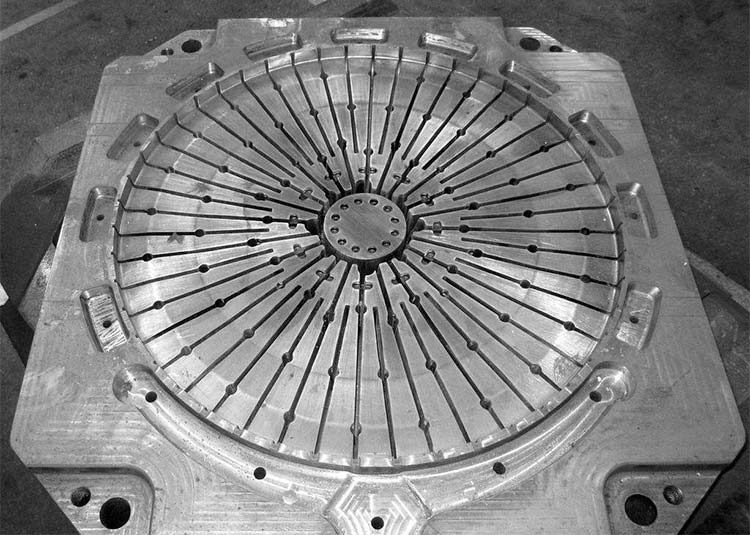Mechanical design engineers should know that pressure casting (referred to as die casting) is a kind of casting. It is to pour molten or semi-molten metal into the pressure chamber of the die casting machine and fill it at a very high speed under the action of high pressure, and make the molten or semi-melted metal solidified under high pressure to obtain a high benefits and high efficiency precision casting method. The characteristics of the die-casting process help to design the die-casting parts to meet the requirements of the die-casting process. Let's look at the advantages and disadvantages of die-casting.
Advantages of die casting
1. High production efficiency, easy to mechanize and automate the production process. Generally, the cold chamber die casting machine has an average die casting time of 50 to 90 times per hour, while the hot chamber die casting machine has an average die casting time of 400 to 900 times per hour, the production efficiency is high.
2. Die castings have high dimensional accuracy and high surface quality. The general tolerance class of die castings is IT13~IT15 in GB/T 1800-2009, and the higher precision can reach IT10~W 1 1. The surface roughness of the scale is 3.2~1.6 bucket m, and the local reach can reach 0.8 bucket m. Because of the high dimensional accuracy and high surface quality of die castings, less demanding die castings can be used directly, avoiding machining or less machining, improving the utilization of the alloy and saving a lot of machining costs.
3. The mechanical properties of die castings are high. The metal melt cools rapidly in the die-casting type and crystallizes under pressure. Therefore, a layer of crystal grains near the surface of the die-casting part is fine and dense. Both strength and hardness are high.
4. Complex thin-walled parts can be die-cast. Die casting parts can have complex part shapes, and the wall thickness of the parts can be small. The minimum wall thickness of aluminum alloy die casting parts is 0.5mm, and the minimum wall thickness of zinc alloy die casting parts can reach 0.3mm.
5. Other materials can be embedded in the die casting. This saves valuable materials and processing costs, and get complex parts and improve part performance, reduce assembly effort.
Disadvantages of die casting
1. Air holes are easily generated in the die casting. Since the metal melt fills the mold cavity at a very high speed during die casting, and the mold material is not gas permeable, the die casting produced by the general die casting method is prone to generate pores. Due to the existence of the pores, the die casting cannot be improved in strength by heat treatment and used at high temperatures; At the same time, the machining allowance of the parts cannot be too large, otherwise the hardened layer on the surface of the die casting is removed, so that the pores near the surface are exposed on the surface of the die casting.
2. Not suitable for small batch production. The die casting type is complicated and costly, so it is generally only suitable for large batch production.
3. Die life is low when die casting high melting point alloys. Some metals (such as copper alloys) have a high melting point, and have high requirements for heat deformation resistance and thermal fatigue strength of die-cast materials, and the life of the molds is relatively low. At present, the materials of die castings are mainly aluminum alloys, zinc alloys and magnesium alloys, ferrous metals are rarely processed by die casting.
Unique advantages of die casting
Die castings have their unique advantages over parts processed by other manufacturing methods:
1. Compared with sheet metal parts, the part shape of the die casting can be more complicated, the wall thickness of the parts can be changed, and die casting can replace several sheet metal parts, thereby simplifying the product structure.
2. Compared with plastic parts, die castings have advantages in strength, electrical conductivity, thermal conductivity and anti-electromagnetic radiation.
3. Compared with machined parts, die castings are light in weight and low in processing cost.
4. Compared with other casting methods, die casting products have high dimensional accuracy, good surface quality and high production efficiency.
Because of the advantages and unique advantages of the above-mentioned die-casting parts, the die-casting parts are now more and more widely used, and play an important role in many products such as notebook computers, mobile phones, cameras, automobile motorcycles and the like. Among these products, die-casting parts appear as consumers in the fashion, environmentally friendly and innovative selling point, and consumers also recognize such products. With the development of die casting technology, die castings will certainly be more widely used.
